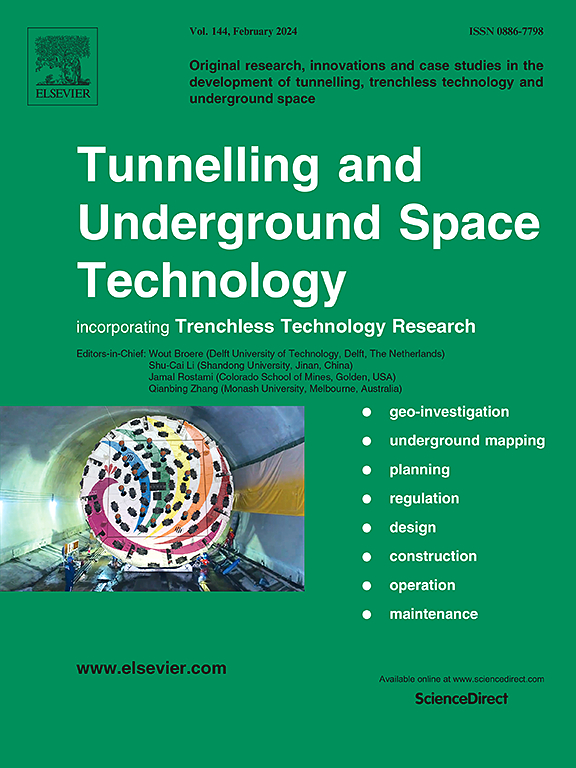地下多种资源协同优先利用:概念、方法及应用
IF 6.7
1区 工程技术
Q1 CONSTRUCTION & BUILDING TECHNOLOGY
引用次数: 0
摘要
地下存在多种主要资源:空间、水、地热能和地质材料。多种地下资源利用的必要性已经得到了广泛的研究,但文献中缺乏评估多种地下资源相互关系的研究,缺乏明确地下资源优先利用类型(包括协同利用和单独利用)及其范围的方法,这阻碍了地下资源协同利用的政策制定和规划制定。本文试图填补上述空白,提出了杭州三江汇地区公共中心及其周边区域病区协同优先利用的方案。首先,通过对地下资源相互作用的典型案例和研究成果的深入剖析,确定了空间、地热能、水和地材等多种地下资源之间存在的排斥、竞争和陪伴三种关系。其次,基于多智能体系统(MAS)与多智能体系统(mrs)的相互作用,提出了一种模拟mrs相互作用的方法,明确了mrs的优先级类型及其使用范围。最后,以杭州三江汇地区公共中心及其周边为例,验证了本文所建立方法的合理性。结果表明:研究区地下空间资源优先利用面积为9.6 km2,地物资源优先利用面积为2.0895 × 108 m3;该方法可以填补决策支持工具的空白。本研究的发现有助于我们更好地理解微生物协同利用机制,有助于微生物可持续利用和微生物规划的制定。本文章由计算机程序翻译,如有差异,请以英文原文为准。

Synergistic priority utilization of multiple underground resources: Concept, methods, and application
Multiple major resources exist below the ground: space, water, geothermal energy, and geomaterials. While the necessity of using multiple underground resources (MURs) has been extensively studied, the literature lacks examinations assessing the interaction relationship of MURs and the method of clarifying the priority utilization type (including synergistic use and individual use) and its scope of MURs, which hinders the policy making and planning formulation of MURs synergistic utilization. This paper seeks to fills these above-mentioned gaps and proposes a scheme of the synergistic priority utilization of MURs in the public center and its surrounding of Hangzhou Sanjianghui area. First, exclusion, competition and accompaniment, three types of relationships existing among multiple underground resources including space, geothermal energy, water and geomaterials were identified upon the deep dissection of typical cases and research results of the interactions among underground resources. Second, based on the interactions of MURs and the multi-agent system (MAS), a method for simulating the interactions of MURs and clarifying the priority type and its scope of MURs utilization was developed. Finally, with the public center and its surrounding of Hangzhou Sanjianghui area as an example, the rationality of the method established in this study was verified. The results indicate that the priority of using underground space resources is 9.6 km2 and 2.0895 × 108 m3 for the geomaterial resources in the study area. The proposed method can fill the gap in decision support tools for using MURs. The findings of this work provide a sound understanding of MURs synergistic utilization mechanism, which is supposed to be conducive to the sustainable utilization of MURs and the formulation of MURs planning.
求助全文
通过发布文献求助,成功后即可免费获取论文全文。
去求助
来源期刊

Tunnelling and Underground Space Technology
工程技术-工程:土木
CiteScore
11.90
自引率
18.80%
发文量
454
审稿时长
10.8 months
期刊介绍:
Tunnelling and Underground Space Technology is an international journal which publishes authoritative articles encompassing the development of innovative uses of underground space and the results of high quality research into improved, more cost-effective techniques for the planning, geo-investigation, design, construction, operation and maintenance of underground and earth-sheltered structures. The journal provides an effective vehicle for the improved worldwide exchange of information on developments in underground technology - and the experience gained from its use - and is strongly committed to publishing papers on the interdisciplinary aspects of creating, planning, and regulating underground space.
 求助内容:
求助内容: 应助结果提醒方式:
应助结果提醒方式:


